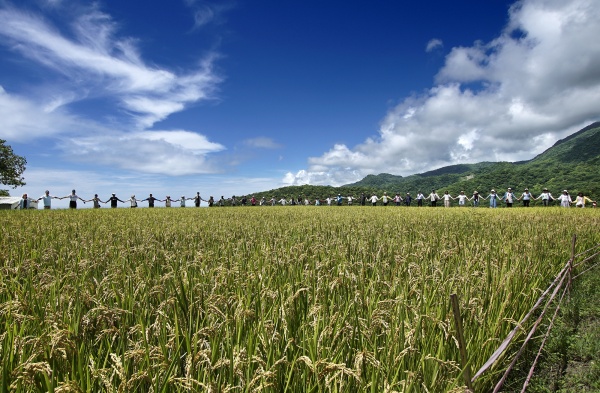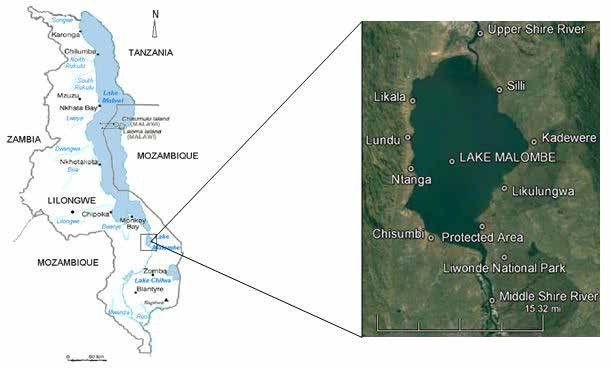IPSIの活動

マロンベ湖の漁業回復に向けた社会生態学的生産ランドスケープシースケープ改善のためのマングローブ林の再生
Lead organization: Grains of Hope Mobilisation (GOHMO)
Other participating organizations: Initiative for Community Health (INCH), Kafucheche Cooerative Group
Introduction
The fisheries sector of Malawi plays an important role in contributing significantly to national economic development objectives related to employment, livelihood support, poverty reduction, food security, foreign exchange earnings and resource sustainability (MOFA, 2016). The Mangochi Municipality is one of the vibrant fishing hubs in the Southern region of Malawi. The Lake Malombe site is a key coastal resource within the Mangochi Municipality supporting both community livelihoods and sustaining the ecological integrity of the site which serves as habitat for both terrestrial and aquatic biodiversity. However due to increase in degradation to the site, biodiversity is under threat and communities are losing their source of livelihood as fisher folks.
Aim of the project
This project therefore aims to empower coastal communities within the Lake Malombe Area to sustainably manage their own marine resources, resulting in productive and profitable fisheries, coastal ecosystem conservation and resilience to climate change.
Project objectives
The objectives of the project are:
- To undertake behaviour change communication on sustainable coastal resource management for improved SEPLS.
- To initiate improvement of actions to enhance sustainable coastal resource management.
Project site
The project will be conducted along and around Lake Malombe in Mangochi District in Malawi as indicated in the Project Map of Malawi below:
The link below shows the actual project location :
Map of Malawi system showing Lake Malombe and sites

The project activities will include:
- The demarcation of the fisheries recovery zone which will be led by community members
- Community awareness raising and engagement of the community in the project issues related to coastal resource management and to link them with their livelihoods
- Planting Six Thousand (6,000) red mangrove seedlings over a 6ha degraded mangrove area to improve the vegetation of the site and mangroves will be growing well.
- Establishment of 15 community volunteer groups who will support monitoring of both project activities and any illegalities that might be going on at the site
Expected outcomes
The most important Outcomes will be:
- The demarcation of the fisheries recovery zone which will be led by community members. Community members will have clearly demarcated core and buffer zones, which will support the recovery of fish for sustainable livelihoods. This will also serve as a learning point based on a readiness plan for future designation as a marine protected area.
- Through awareness raising and engagement of the community in the project, community members will be aware of the issues related to coastal resource management and will be able to link them with their livelihoods. Initiatives such as the demarcation of the core and buffer zones within the mangrove areas will serve as spawning sites for fish demonstration for positive behavior change in the community, where the members will now support the conservation of their coastal resources.
- Six Thousand (6,000) red mangrove seedling will be nursed and planted over a 3ha degraded mangrove area. The planting of the degraded area will improve the vegetation of the site and mangroves will be growing well. A community fisheries recovery zone will be demarcated. A core zone encompassing the lagoon will be demarcated with red pillars and the buffer zone demarcated with blue pillars. The pillars will be erected 50m from the buffer zone and 100m from the lagoon shore covering 12,000 m2.
- 15 community volunteer groups will be recruited to support monitoring of both project activities and any illegalities that might be going on at the site.
- The community will designate a community waste dumping site and assigned volunteers to monitor and ensure the waste is collected and dumped only at the designated site.
Relevance to the IPSI Strategy and IPSI Plan of Actio
The project has contributed to IPSI strategic objective 1, 2, 3, 4 and 5 through undertaking behavior change communication on sustainable coastal resource management for improved SEPLS and to initiate improvement of actions to enhance sustainable coastal resource management. Further to this, the project also focuses on the Kunming-Montreal Global Biodiversity Framework which seek to address the Global challenges on Biodiversity and Ecosystem Services with the aim to halt and reverse biodiversity loss to achieve the outcomes it sets out in its Vision, Mission, Goals and Targets, and thereby contribute actions and results-oriented which aim to guide and promote, at all levels, the revision, development, updating, and implementation of policies, goals, targets, and national biodiversity strategies and actions plans. It also facilitates the monitoring and review of progress at all levels in a more transparent and responsible manner. Thus, this project aims to empower coastal communities within Lake Malombe Area to sustainably manage their own marine resources, resulting in productive and profitable fisheries, coastal ecosystem conservation and resilience to climate change and this is in line with the IPIS objective and the Kunming-Montreal Global Biodiversity Framework since The Kunming-Montreal Global Biodiversity Framework stress that “Nature can be conserved, restored and used sustainably while other global societal goals are simultaneously met through urgent and concerted efforts aimed at fostering transformative changes. The most important achievement of this project is the demarcation of a fisheries recovery zone which would serve as a mean of enhancing both fisheries recruitment as well as protecting the habitat of aquatic species.
Actors and task sharing
- Grains of Hope Mobilisation will be responsible for managing the project, stakeholder consultations and relations. GOHMO will also be responsible for the capacity building activities.
- Grains of Hope Mobilisation (GOHMO) will be responsible for developing training/capacity building program
- Initiative for Community Health (INCH) will liaise with government agencies to incorporate biodiversity into programs
- Initiative for Community Health (INCH) will also conduct the knowledge assessment.
Resources, funding
The Resources and funding for the project will be provided by Well-wishers and community members..
Monitoring and reporting
Our
monitoring will be preceded by the development of a monitoring protocol which
will focus on key indicators that
will determine the success or otherwise of the
Project. The monitoring team will involve
both the project team and the district assemblies’ representatives. The team
will provide reports after every six months after implementation. This will
provide updates to stakeholders on progress, outputs
and challenges with corrected measures.


